If I Tried to Kill a Spider and He Ran Away Will He Come Back
Cockroaches: The insect we're programmed to fear
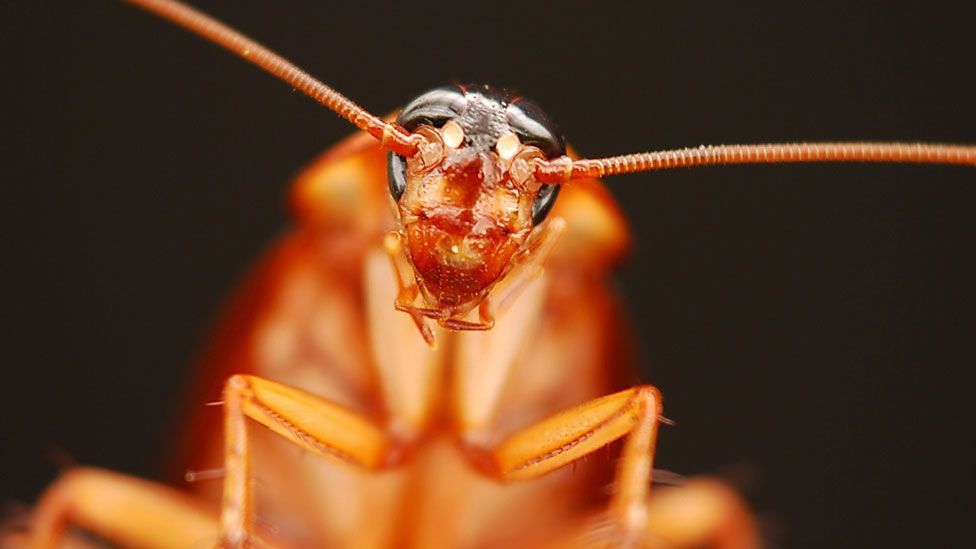
Why are we so revolted by roaches? Rachel Nuwer visits her own personal insect hell to find out, and discovers a disturbing truth about our future with these creatures.
W
What's your earliest memory? For me, the answer is not pleasant.
I'm about four years old, and I'm sitting in the green-carpeted hallway of our family's first home in Biloxi, Mississippi. The bathroom door stands open in front of me, and my mother is emerging from the shower. As she pulls a towel from the rack, I notice a dark stain marring that clean, fluffy pink material. It's a cockroach. I see it before she does. As she wraps the towel around her body, however, it quickly makes itself known. She shrieks, flailing and stomping, suddenly naked and vulnerable and afraid. I begin to cry.
I recently asked my mother about this event, and she had no idea what I was talking about. Perhaps I dreamed it, or my early memory is flawed. Or perhaps it was just business-as-usual in our Southern US home, where – no matter what chemical barriers were erected – cockroaches inevitably found their way inside.
Real or imaginary, this incident triggered an intense dislike of cockroaches that would only intensify as years passed and encounters with those creatures multiplied. For me, a roach is not just an insect. It is a psychological gateway into a lengthy laundry list of traumatic experiences: digging through a box of supplies in my outdoor playhouse when a roach zips out and scuttles up my leg, its spiky appendages pricking at my skin. Watching my first cat, Salty, as he traps a roach, dismembers it with his claws and mouth, and then eats the succulent, writhing remains. Finding a small dead cockroach tangled in my wet hair after a trip to the beach, and thereafter suffering recurring nightmares of picking roaches out of my hair.
Roaches invade our homes and make those intimate spaces their own. As physical embodiments of filth and germs, they show that for all of our fortifications against dirt and disease, those efforts are ultimately futile. "They've really figured out how to exploit the opportunities we create, and in doing so, developed behaviours and life histories that prevent us from controlling them," says Jeff Lockwood, a professor of natural sciences and humanities at the University of Wyoming. "In a sense, we loathe that which we foster." Our very existence enables them to thrive.
The true nature of that relationship – and the irrational fear it so often inspires – was something I was compelled to learn more about for very personal reasons. That mission would require me to dig out the cockroach exoskeletons in my closet, explore intriguing new techniques to help us conquer insect fear, and ultimately confront the terror head-on, by journeying into the heart of six-legged darkness, at one of the premier cockroach labs in the world. Along the way, however, I would uncover an unsettling truth about the future of our relationship with roaches, and it would transform the way I see these life-long foes.
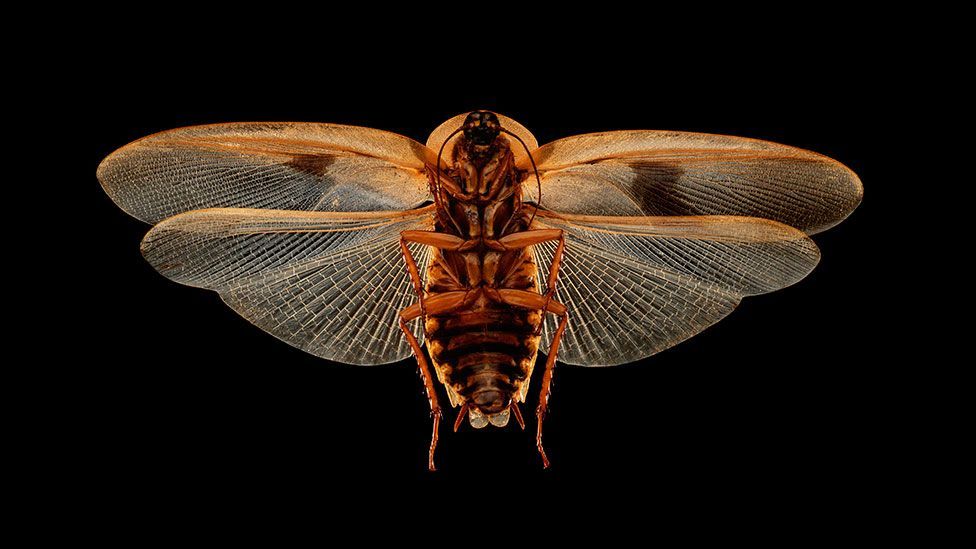
The giant cockroach - females can reach 10cm long (SPL)
Delving into cockroach lore, I quickly learned that our distaste for them goes way back. The ancient Egyptians fashioned spells imploring the ram-headed god Khnum to banish cockroaches; in ancient Rome, Pliny the Elder wrote of the "disgusting" nature of those pests; and John Smith of Jamestown complained of the "ill-scented dung" of the "cacarooch", which quickly took up residence throughout the New World. By the 19th Century, the handful of cockroach species that carved out a niche for themselves as pests had more or less achieved global domination.
Yet given what we know today, logically it does not make sense to fear cockroaches. Unlike mosquitoes, ticks or fleas, roaches aren't disease vectors, and they do not feed directly on our blood, skin or fluids. We don't go screaming when we see a mosquito, even though they are the world's deadliest animal. Yes, cockroaches wallow in filth, but a case of food poisoning is probably about as bad as it gets if one of those pests skitters across your slice of pizza – a stroll through the park compared to malaria, yellow fever or dengue fever.
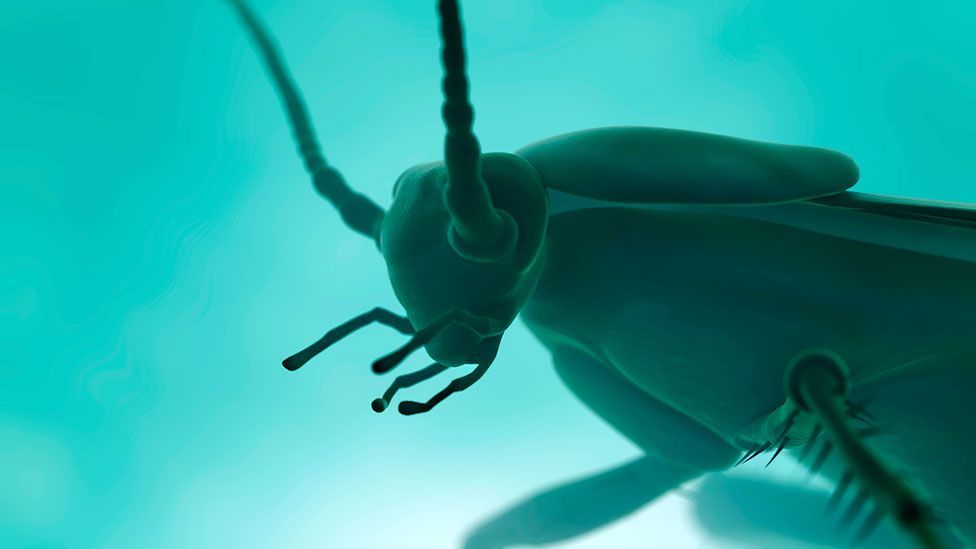
Still, anecdotally, many people suffer from katsaridaphobia, or cockroach phobia. Lockwood guesses that the number reaches well into the tens of millions, and Richard Kaae, an entomologist at California State University, thinks that cockroaches are the number one insects feared by humans. Quantifying the impacts of katsaridaphobia is difficult, however. The vast majority of people incapacitated by roaches never seek help, primarily because they want to do everything possible to avoid even speaking of those creatures. I was one of them – until I decided to do something about it.
They creep up on you
I had been busy all afternoon in my New Orleans kitchen, preparing dinner for a guy I liked. After the meal, we headed outside to enjoy the magnolia-perfumed breeze drifting off the Mississippi. As I coyly sipped my wine – SMACK! – a flying cockroach touched down straight on my cheek. Releasing a staccato scream, I spasmodically jerked my arms upward and sent a waterfall of red wine down my date's face and white shirt. He stood there, stunned. That roach ruined my date.
In the worst cases, roaches actively impact the victim's life. Psychologists report patients too terrified to get out of bed at night or to go to the kitchen for fear of encountering a cockroach. Emily Driscoll, a documentary producer in New York City, once became trapped in a hotel room in India because a roach was sitting on the door handle. "I couldn't move, I was paralysed," she says. "I needed to keep in it my sight."
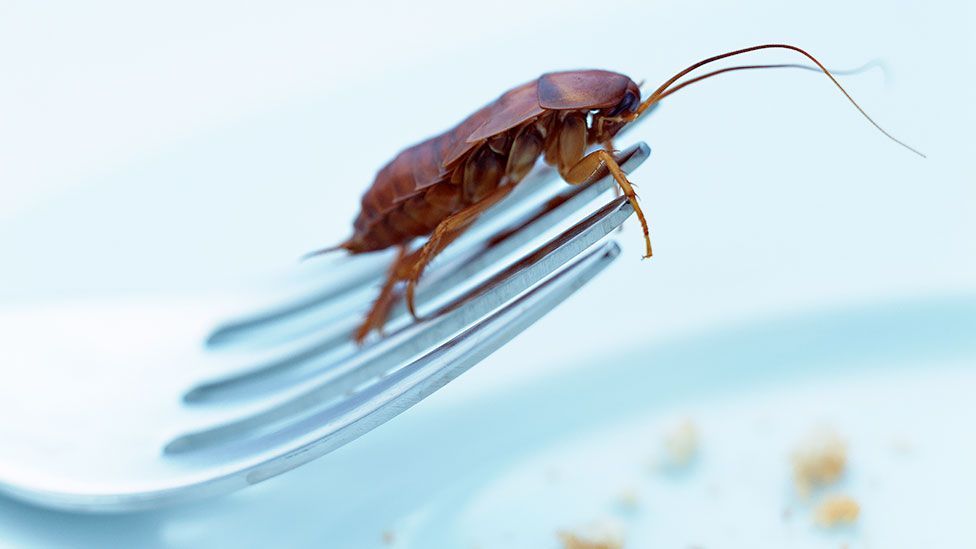
Andrew Stein, a computer programmer who grew up in New Orleans but now lives in New York, also recalls once being trapped by a roach. One night in his newly renovated Brooklyn apartment, he heard a familiar scratch-scratch-scratch coming from the bathroom. "This was not a place I was expecting to see a bunch of insects," he says. "But I thought, 'That sounds like it could be a cockroach.'"
Investigating, he found a large American cockroach clinging to his bath towel. He spent the next two hours camped out in the hallway, trying to work up the courage to go back inside and kill the roach. When his roommate came home at around 2am, however, Stein saw a better way out: he paid his roommate $10 to dispose of the roach rather than face it himself. "That's probably the most emasculating thing I've ever told anyone," he says.
It's hard to pinpoint what exactly it is about cockroaches that bothers people so much, simply because there are so many answers. "They're erratic; it's like they're doing eight things at once; they look dirty; they move really fast; they seem to have no fear of people," Stein rattles off. "The first thing I think about when I see one is that that thing could jump across the room and touch me if it wanted to – and there's nothing I could do about it."
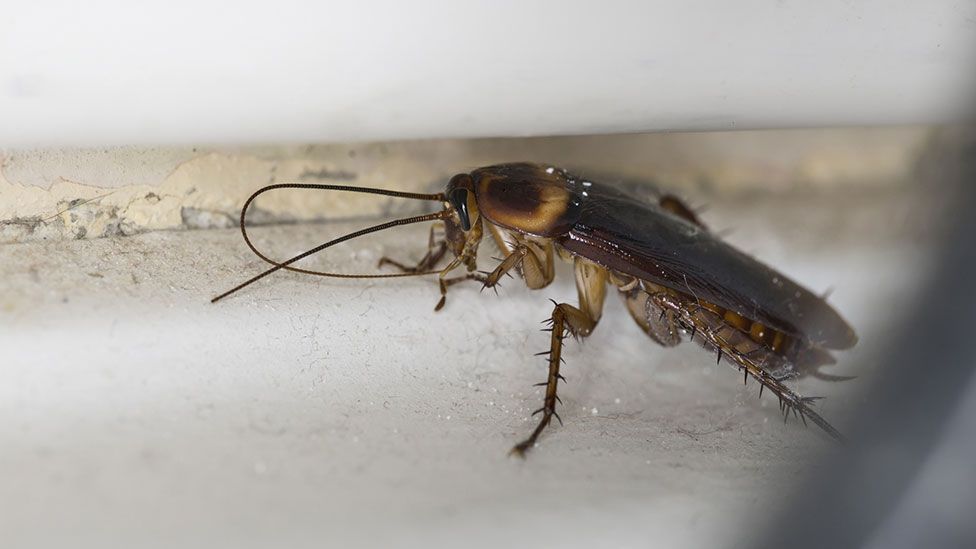
As Lockwood explains, the things we find so repulsive about roaches are all a matter of those creatures' biology. "Cockroaches tap into this sort of evolutionary aversion we have to greasy, smelly, slimy things," he says. Their unpredictable movements and phenomenal speed – relative to their size, they're one of the fastest terrestrial animals on Earth – evolved as escape mechanisms for evading predators. Their stench, too, is indicative of an underlying purpose. The reason why smashed cockroaches smell like a clogged truck stop toilet that's been fermenting in 90-degree heat is because they store nitrogenous waste – uric acid, specifically – in their fat for recycling. Finally, their sickly slick feel derives from a lipid-based wax that their cuticle secretes to prevent water loss. None of these traits bode well for the human observer.
"Plus," Lockwood adds, "they're defiant little bastards."
Roaches are incredibly prolific, and hard to get rid of. If you start out with one pair of German cockroaches and allow them to reproduce in peace and with bountiful food available, then "within a couple years you could have two to three million", Kaae says. They'll also eat just about anything, from cork to paper to grass. In the heaviest of infestations – on Navy submarines and in children's bedrooms alike – they will gnaw off their sleeping victims' eyelashes.
But those physical and behavioural traits do not explain why roaches are so frequently the subjects of phobias. As it turns out, the root of that fear often traces back to some traumatic experience in life, such as witnessing your mother scream at the sight of a roach. Often, that fear forms early, around the age of four or five. "Evolutionarily, we're highly attuned to picking up on cultural clues from parents and society as to how we ought to respond to insects," Lockwood says. "Today, most of that feedback is negative so we wind up raising anxious children."
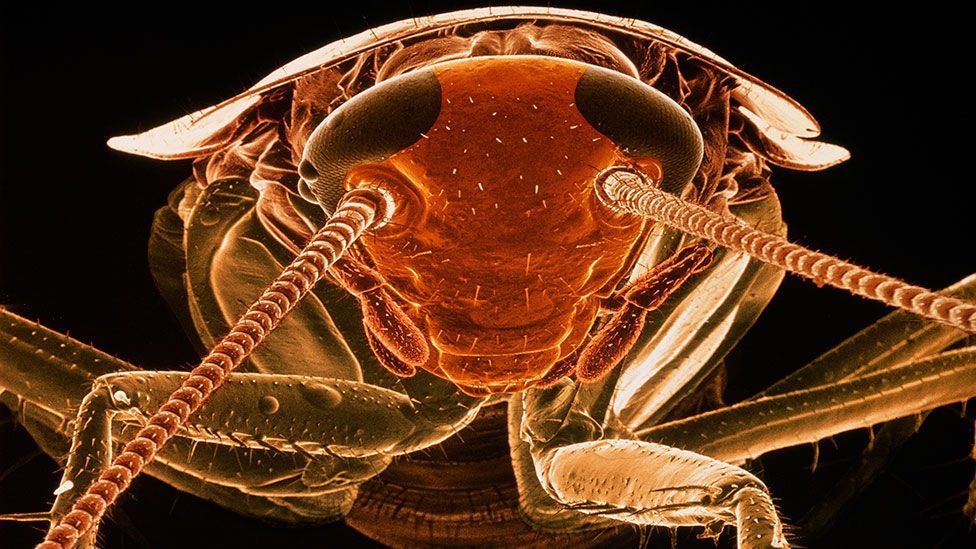
Some do manage to evade that fear, however. Philip Koehler, a veteran entomologist with a mischievous twinkle in his eye, probably spends more time (voluntarily) with cockroaches than almost anyone else in the world. At his lab at the University of Florida, he keeps around a million of those insects. Although intimately familiar with the roach antics that bother so many people, he's nonplussed. "I didn't overcome any fear because I never had any fear," he says, chuckling. "I was probably a twisted individual right from start."
His fascination with those creatures does have its limits, however. "Personally, I don't find them to be attractive," he admits.
On a warm spring morning I dropped by Koehler's office with a two-fold mission: glean all I can about his pesky research subjects and, more importantly, confront them one-on-one.
The clutter of Koehler's office reflects a nearly 40-year career; the walls and shelves are crowded with gag gifts and posters professing his comical hatred, not of roaches, but of cats; faded, poster-sized prints of the horrendous cockroach infestations of the 80s; and a wall full of awards. Outside, a disturbingly realistic 6-foot tall metal cockroach sculpture, lovingly crafted by one of his former students, guards his door. Earlier, one of Koehler's students warned me that "Dr Koehler loves to make people feel strange", and I half expect some sort of trickery – a roach in my coffee, an insect tossed my way, but luckily we start slow. The trust is not broken. He's here to help.
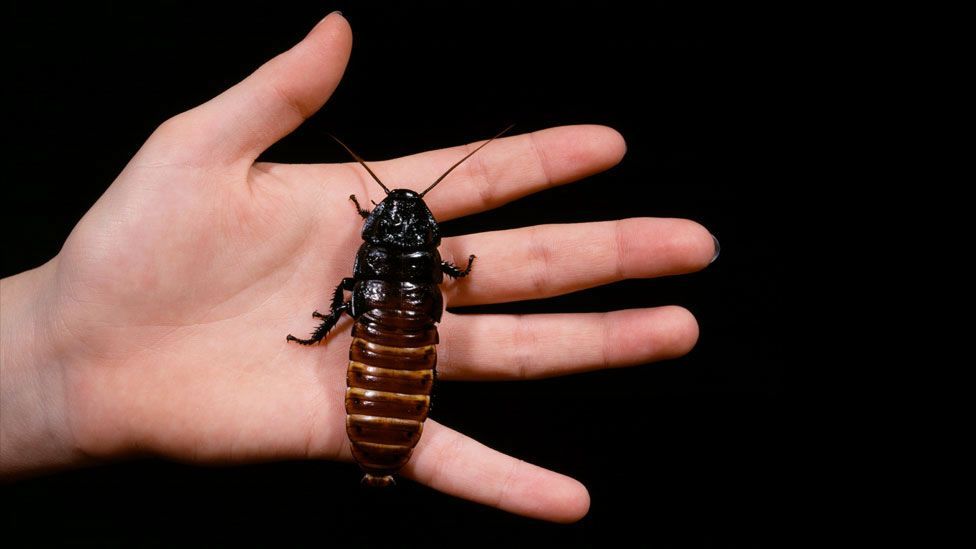
A hissing cockroach (SPL)
Koehler is no psychologist, but he's familiar with treatments for cockroach phobias. Several years ago, a woman in her 50s approached him. She said her life was completely disrupted by cockroaches; everywhere she went, she couldn't function because she was always on the lookout for a cockroach. Was there anything he could do to help? He invited her to the lab for an informal session of exposure therapy, starting small by simply talking about roaches, then progressing to photos, pinned roaches and eventually the real deal. After several visits, her hyperventilating stopped and she was even able to hold a hissing cockroach. I've travelled to Gainesville to see if the same treatment could work for me.
He begins by weeding out my issue with roaches. "What is it you don't like about them?" he asks, peering inquisitively from behind wire-framed glasses. "The colour, the movement, maybe the feel of their legs?"
I relay a few of my stories, trying to make him understand, and he listens patiently until I finish. "So the roaches never really hurt you?" he asks, leaning forward over the desk. He's challenging the logic of my fear – a tried and true tactic when it comes to treating irrational phobias.
"Well, no, I guess not," I admit. "It's just they were there… They were in my space…"
"They just startled you," he suggests.
"Yeah, I guess it must be something about the surprise…"
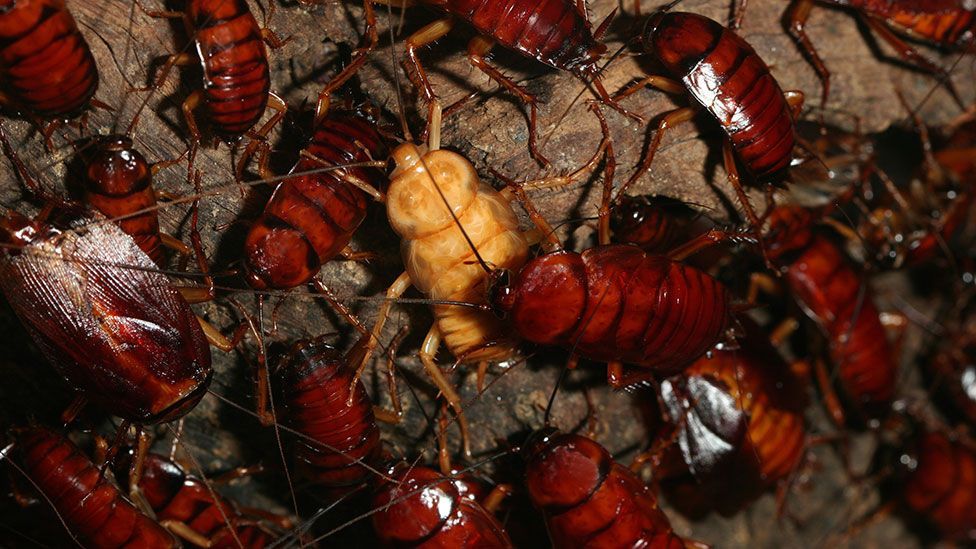
He's technically right, but I don't feel fully satisfied with the conclusion we've reached. "Startled" doesn't begin to articulate what roaches manage to do to me. Later, I realise how I should have conveyed the problem. When a roach slinks into my bedroom at night or flies into my face, I am forced to acknowledge that all is not under my control. Just as a leering cat-caller or subway groper might not inflict physical harm on his victims, that undesirable interaction can still inspire intense distress. Unprovoked danger – whether actual or perceived – can appear without warning. It can slink out of a dark alleyway or from beneath a closet door at any moment.
To their victims, cockroaches commit a personal violation. In the words of George A. Romero, they creep up on you. And there's nothing you can do to stop them.
Yet could there be a way to conquer that aversion?
Exposure therapy
"Hey, Roach!" a third-grade classmate jeered at me one day. Cleverly, he had replaced my nickname, "Rach", with that of my nemesis. But rather than being offended, I fully embraced the new moniker, drawing cartoon roaches on folded notes passed under desks to friends, encouraging the nickname's use. Roaches are cute, I told myself, even lovable. There's nothing to be afraid of. But when a living roach would appear in the school bathroom or gym, these soothing thoughts were revealed for what they really were: lies told to comfort a scared little girl.
Over the years, I noticed my phobia intensifying. Viewing this as a weakness, I tried in my own ways to self medicate. In high school, I stayed up late playing "Bad Mojo," a computer game about a criminal entomologist who is transformed into a cockroach, and encouraged slumber party karaoke of "Joe's Apartment" cockroach song renditions. But digitised, anthropomorphised roaches on a two-dimensional screen and real-life roaches are not at all the same beast.
A bit older and living in New Orleans, I volunteered to work at the Audubon Zoo's hands-on Discovery Walk, and requested to work with the Madagascar hissing cockroaches and giant Brazilian cockroaches. Perhaps if I demonstrated roaches' harmlessness to children, I thought, I could somehow undo my own distaste for them. But even though I regularly handled those exotic species, I still performed a sort of panicked Riverdance each time one of their urban cousins crossed my path in the infested Crescent City.
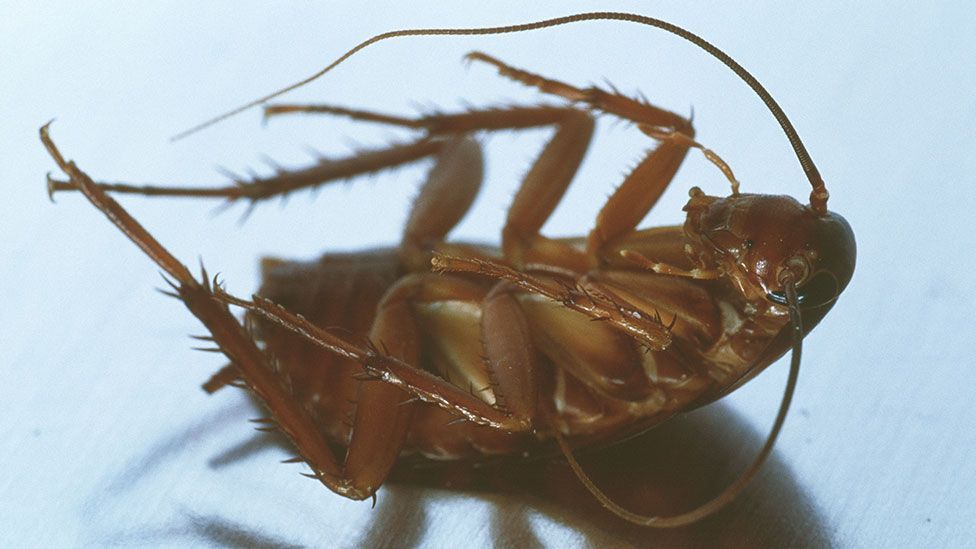
I find it hard to believe that anything could ever change my feelings and reaction towards roaches. But not everyone agrees with this hopeless prognosis.
Defeating phobias, therapists insist, just requires becoming habituated to the cause of that fear, whether it's cockroaches, heights or being in crowds. Expose someone to the same thing over and over again and it will eventually become boring and commonplace. Untold numbers of phobics go untreated, however, simply because few possess the unique mix of desperation and bravery needed to willingly sign up for the chance to interact with a cockroach. "The idea of touching a roach is pretty much the worst thing I can think of," Stein says.
Some therapists are designing workarounds for skittish patients. A team of researchers at the James I University in Spain thinks that augmented reality could be a solution for treating cockroach phobia. Augmented reality projects computerised images into the real world, allowing a more convincing encounter. To apply this for cockroach phobia treatments, a headset combined with a six degrees of freedom tracking system creates a vision of cockroaches running over the wearer's actual hand.

Watching 'augmented reality' bugs on your arm promises a treatment for cockroach fear (Cristina Botella/Universidad Jaume/Spain)
To test the system, the Spanish researchers recruited six participants, all of who suffered from debilitating, clinically verified cockroach phobias. One participant wanted to sell her apartment after spotting a roach, while another refused to visit her grandmother for fear of seeing a cockroach. Still others reported "complete loss of control" when seeing a cockroach.
Before undergoing augmented reality therapy, none of the women would agree to enter a room that contained a live cockroach in a plastic container. After putting on the augmented reality headset and watching fantasy roaches crawl all over their hands for one to three hours, however, the women's anxiety levels slowly began to decline. When the treatment session concluded, they were able to approach the live cockroach and even stick a finger into its container for a few seconds. Twelve months after the original treatment, the participants maintained those improvements.
"A phobic brain has stored bad information about cockroaches: it thinks cockroaches are very, very dangerous," says Cristina Botella, a professor of clinical psychology and leader of the study. The augmented reality system, however, changes that fear structure by demonstrating cockroaches' harmlessness. "The brain is able to store new information that is not compatible with the old," she says.
Unfortunately, augmented reality is not yet available in a clinical setting. Until further research can be completed and the treatment gains approval for use in therapy, phobics wishing to rid themselves of their fear must go about it in the old fashioned way: through cognitive behaviour therapy paired with exposure therapy.
For those who can garner the courage to try it, their efforts are often rewarded in as few as one to three sessions. "These therapies provide a way to live with those creatures rather than spend a life trying to avoid them," Lockwood says.
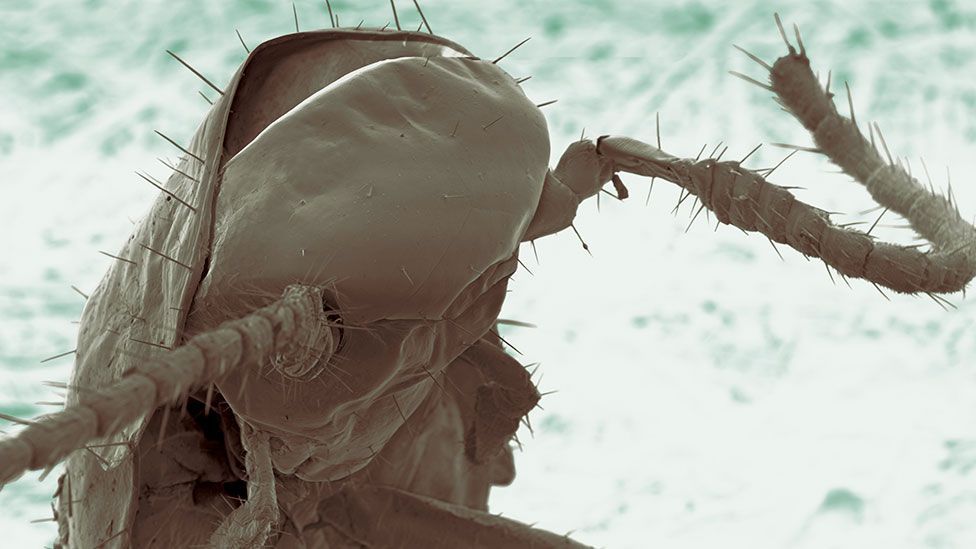
The German cockroach (SPL)
Back in Gainesville, I'm hoping this kind of therapy might work for me. We leave Koehler's office, heading to a closed door just down the hall. "And here we have our cockroach room!" he proclaims, swinging open the portal to my personal hell. I want to wait a moment to gather my resolve, but he shoos me in. Suddenly, I am surrounded by at least a million roaches of 14 different species. They are on display no more than four feet in front of me, in dozens of glass jars fitted with deceptively festive orange and blue lids. Each contains a teeming mass of insects, from bitty babies smaller than my pinky nail to giant Brazilian cockroaches larger than a mouse. My gaze, however, immediately seeks out and settles on that most reviled species of all: the American cockroach.
There they sit, about a dozen of them: bloated, shining, and the colour of slick sewage, the glass of their enclosure stained with faeces and regurgitate. Their antennae waggle as they slowly mull about the confines of their glass enclosure. I can hear them; the gentle scratch, scratch, scratch of their spiny feet. As Koehler and Liz Pereira, the lab's official "roach rearer," parade various specimens before me – the comical Madagascar hissing roaches, pullers of toy tractors; the Suriname cockroach, which burrows into its substrate like an earthworm; a colony of German cockroaches named after the Chinese restaurant they were collected from; the Cuban cockroach, a striking chartreuse creature with delicate wings, the only lovable one of the bunch, but sadly discovered to have died sometime over the past day – my peripheral vision never leaves those American cockroaches. I can feel it in the hairs on my arms, in the racy beat of my heart and slight shortness of breath.
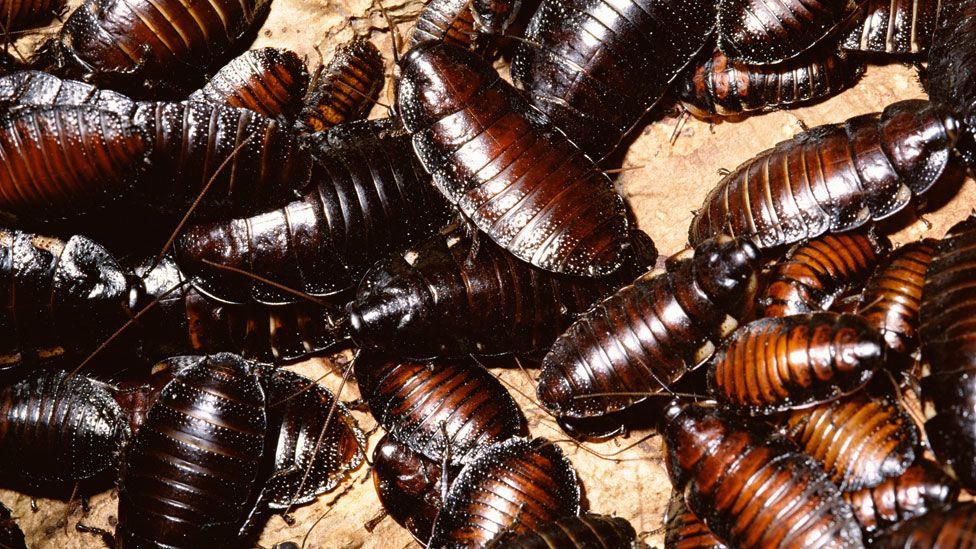
The hissing cockroach (Thinkstock)
Finally, the moment to confront those monsters has arrived. Pereira pulls the American cockroaches off their place on the shelf and gently deposits them on the counter before me. I take an instinctive step back, putting Koehler's body between the roaches and myself, subconsciously seeking out a protective parental presence as that timeless fear resurfaces. Pereira, meanwhile, is all giggles. "On my first day here I reacted like you," she says, grinning. Then, she moves to remove the lid.
"Wait! Won't they fly out?" I protest – but it's already done.
The reek of their existence fills the small room, and I crinkle my nose while craning my neck toward the jar. Nestled within protective folds of cardboard, several large roaches wave back to me with their antennae.
I swallow, and then ask, "Is it possible to touch one?" Koehler grins. "Of course it is!"
In one swift motion, Pereira snatches the cardboard shelter from the jar, seamlessly transferring it to another empty container and banging it against the walls. The roaches tumble forth from their hideout, scattering around the glass enclosure in startled confusion. She uses carbon dioxide to sedate them (I'm curious but not crazy). Eventually, they all grow still.
Pereira reaches in and scoops one up. "Want to hold it?" she asks.
I extend a trembling hand, and she drops a fat specimen it into my open palm. My brain struggles to register this conflicting information – I am holding a cockroach, and it's fine – and I laugh nervously, slightly hysterically even, as Koehler snaps a few photos. And then it's over. Pereira gently takes the roach and returns it to its slumbering friends.
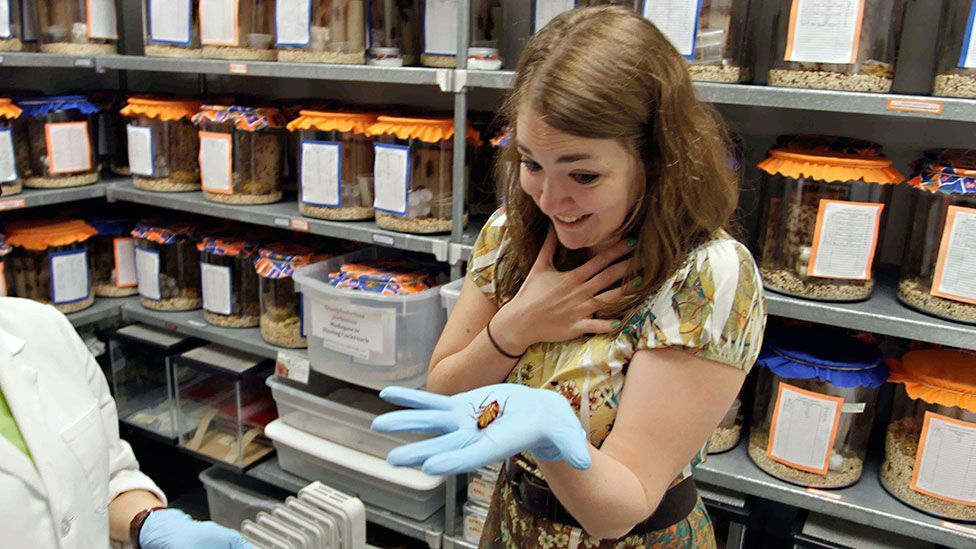
Me holding a cockroach in my own personal hell...it is sedated, right?
Later, I send a photo of myself holding the roach to my boyfriend. "It doesn't count if you're wearing a glove!" he texts back. He clearly doesn't understand, I think, shaking my head. Only a fellow phobic would understand. Glove or no glove, I held a cockroach, and I survived.
Plus, what we've discovered about roaches recently suggests that, if we value our health, it's wise to avoid physical contact.
Cause for alarm
One early morning during my teenage years, I groggily got out of bed and reached for a box of cookie leftovers on my bedroom floor. I took a big bite, and – while chewing – casually noticed a large chunk of chocolate icing was still in the box. Except it wasn't icing. It was a tremendous American cockroach. A roach that had, for all I know, dredged itself in raw sewage and rotting meat, not to mention toting along its own natural garden of microbial terror. I spewed out my mouthful, splattering my white and pink flower-patterned wallpaper with dark streaks of chocolate-infused spittle. Those stains never did come out.
There was a reason I wore that glove in Koehler's roach room. People have long suspected that cockroaches are mechanical transmitters of disease – they walk through rot and faeces and filth and then deposit those germs onto other surfaces. But it's hard to prove that a cockroach is to blame for a case of food poisoning when it could be a chef's dirty hands or any number of other factors that introduced the contamination. Several years ago, however, Koehler and one of his students helped prove that cockroaches could at least plausibly transmit harmful bacteria. Bacteria such as salmonella and E. coli O157:H7 – the deadly kind – can actually swim through the cockroaches' waxy outer layers and survive there for at least two months, all the while posing a risk for being transferred to food. Bacteria can also survive a trip through a cockroach gut, so faeces scattered throughout a kitchen or home are like little land mines of potential disease.
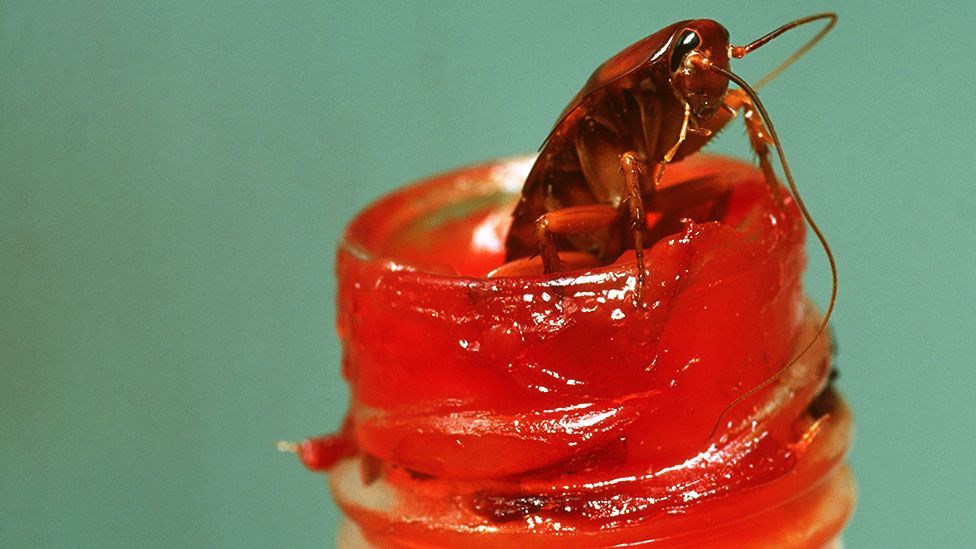
Spreading disease, however, likely is not their biggest impact on our health. Proteins found in cockroach faeces, regurgitates, skin and body parts are potent allergens for many people, as proven when entomologists often become acutely allergic to their research subjects. One famous cockroach expert, William Bell, grew so allergic to the arthropods' cuticles that he could no longer eat lobster by the end of his career. Likewise, some people who seem to be allergic to coffee or chocolate are actually just aversely reacting to ground up cockroach parts sprinkled into those products.
But the worst problems with cockroach allergies occur in urban centres, where there's often no escaping them. People breathe in whiffs of cockroaches on the subway and in restaurants, on the bus and in the street. For many, especially those who live in large apartment buildings with inadequate pest control, their homes are also perfumed with these invisible allergens. If a neighbour isn't taking care of his cockroach problem, then it's almost guaranteed that those allergens will find their way into adjacent apartments, through air vents, shared hallways and pioneering insects travelling through communal walls and plumbing.

Are roaches causing higher rates of childhood asthma? (SPL)
Children are the most impacted victims of cockroach allergies, which have also been associated with asthma attacks. The distribution of asthma is not at all even across New York. In some neighbourhoods, rates soar to 20%.
In Manhattan's far north, on 168th street, Matt Perzanowski studies these allergens at his lab at Columbia University Mailman School of Public Health. He and his colleagues travel to homes across the city and vacuum up dust samples in kitchens and beds. In his white, sterile lab, he analyses the contents of those vials for cockroach parts. From looking, you'd never guess that the bodies and refuse of six-legged invaders taint those harmless-looking bits of fuzz and dust. "Cockroaches haven't changed," he says. "The critical thing that's changed in terms of exposure is that kids just spent a lot more time inside now, which means they're around cockroaches more."
There are surely other factors, but Perzanowski has found that kids who live in neighbourhoods with higher rates of asthma are about twice as likely to be allergic to roaches.
Roaches, in other words, are more than just a source of irrational fear. They may be making us unwell. The question is, what can we do about it?
The coming war
I douse the roach in a stream of Raid, taking perverse pleasure in its dance of death. Try as it might, the roach can no longer get a grip on the plaster wall. It topples backward, antennae flailing, wings unfolding, running in frenzied figure-of-eights as if searching for a way out. But it will find no respite from the neurotoxin. Minutes later, it has bucked itself onto its back, its abdomen curled into itself, the closest a roach could come to a foetal position. Life occasionally reasserts itself with a deceptive spasm of the legs, but I know this roach is toast.
Naively, we thought we could stop them. Back in the 1990s, we assumed the war was won when bait traps hit the market. After decades of inefficient home treatments, we had finally developed a method that seemed to completely devastate the enemy. For roaches, baits were "like crack-cocaine, the roaches loved them so much", says Jack Brans, owners of Brans Pest Control in Harahan, Louisiana. The hoards were pushed back, the cockroach problem all but eliminated. We humans became complacent. Assuming the problem had been taken care of, fewer entomologists dedicated their studies to roaches, and funding for roach-related research and poisons shifted to other pests, like bedbugs.
But that success will likely be short-lived. In the early 2000s, a darkness began to re-emerge in kitchens and bathrooms across the country. Whispers of a growing enemy proliferated at entomological conferences across the country. The roaches, experts realised, had begun to fight back. Baits were no longer as effective as they once were.
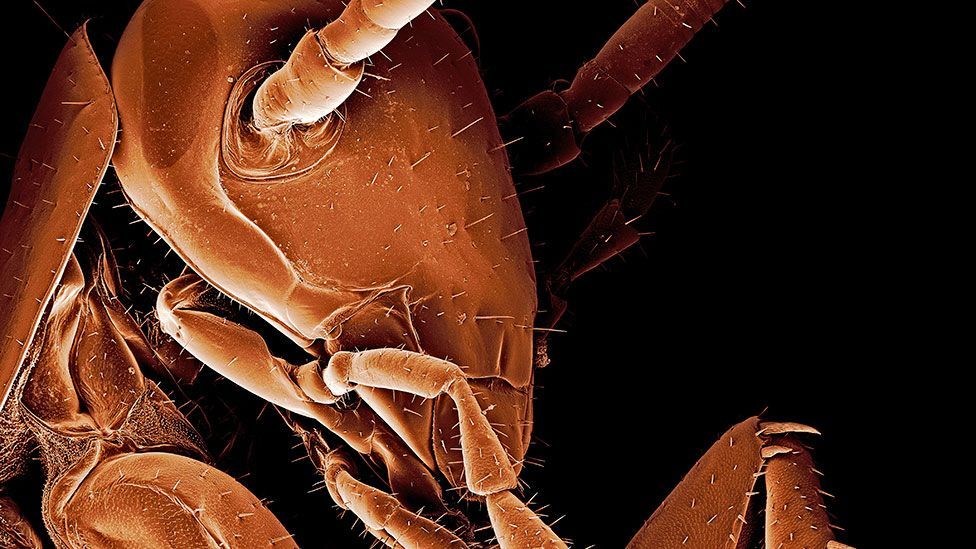
Last year, researchers discovered at least one of the problems: cockroaches have evolved a glucose aversion. The sweetener that roaches originally found irresistible now registers as bitter. With a dearth of researchers available to battle those insects and plenty of regulatory hurdles in the way of developing speedy alternatives, some believe that we're poised on the edge of a coming invasion. "Right now, the German cockroach is making this huge comeback," Koehler says. "A pest control operator called me just today and said that roaches are running all over the place, that they haven't found anything that will kill them."
Koehler believes that we will never defeat the roaches. As he points out, those insects were already doing well for themselves for hundreds of millions of years before we showed up. We just gave them the extra boost they needed for global domination. "They've been able to come up with solutions for almost everything that's been thrown at them for more than 300 million years," he says, a hint of awe in his voice. "There's no way that humans could survive the changes that cockroaches have endured."
Most likely, they will outlast us, too. When our species finally bites the dust, cockroaches will be there to feast on the rotting remains.
As I've come to realise, we need to master our phobias. If not, Koehler warns, "we're going to be living in a roach-filled, skittish society".
As for me, I don't plan on nurturing roach colonies in my apartment anytime soon, and I'll continue to keep a can of Raid under my sink. But when the summer approaches and the roaches creep out of their hiding places, I've resolved to try to do what many other New Yorkers do: just ignore them. Otherwise, I'd be setting myself up for a very distressing future indeed. It's time to get over my fear, and learn to live with our conquerors.
Do you have a cockroach experience you'd like to share? Let us know on our Facebook or Google+ page, or message us on Twitter.
If I Tried to Kill a Spider and He Ran Away Will He Come Back
Source: https://www.bbc.com/future/article/20140918-the-reality-about-roaches
0 Response to "If I Tried to Kill a Spider and He Ran Away Will He Come Back"
Post a Comment